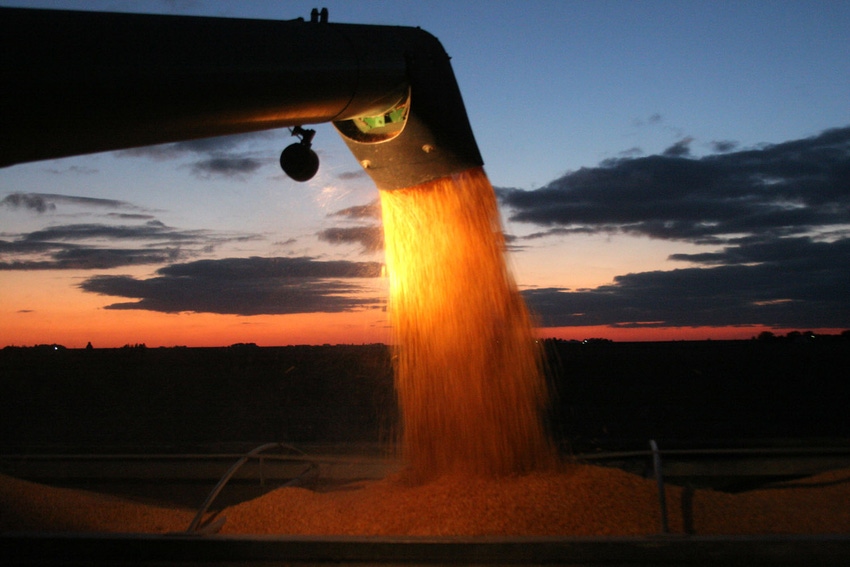July 27, 2011

West Lafayette, IN – Grain crops are being gobbled up faster than farmers can grow them, and that could portend trouble down the road if production doesn't catch up, said a Purdue University agricultural economist.
There have been two major demand surges in the past five years, including the rising use of corn to produce ethanol and China's purchases of soybeans, Chris Hurt said. The former has been driven by government biofuels mandates and high oil prices, while the latter is the product of China's growing food demand brought on by rapidly increasing incomes that have enabled the Chinese people to buy more food.
"These greater levels of usage have placed a strain on the agricultural production system, resulting in low inventories that leave little room for any production shortfalls," Hurt said. "Producers certainly have responded to try to meet those demands, but what we've seen is that demand has really outpaced the ability of the world to supply."
Inventories of corn and soybeans are near "bare minimums" in the United States, Hurt said, with wheat stocks in better shape.
Many years going into harvest there would be enough corn and soybeans in storage to last 45-60 days, or more, Hurt said. That likely won't be the case this fall.
"With corn, it looks like we could be down to about a 24-day supply at the end of this marketing year," he said. "That, of course, means any further threats to the 2011 crop yields would send markets into deeper shortages and higher prices."
Most of the corn grown in the world becomes livestock feed. But in recent years ethanol production has claimed a larger percentage of the crop, leading to increased corn acreage and higher prices, Hurt said.
"Fifty-nine percent of all the growth in corn use in the entire world over the last five years has been in a category where ethanol would be placed: industrial use," he said. "Here in the United States over the last five years 100 percent of the increase in corn usage is for ethanol, representing 2.5 billion bushels of corn."
About 27 percent of the U.S. corn crop is used for ethanol, compared to 10 percent in 2005, Hurt estimated. All told, 16 million additional acres of corn from the 2010 crop were required to produce ethanol versus 2005.
Soybeans also will be in short supply this fall, Hurt said. The U.S. Department of Agriculture estimated the domestic soybean supply might be just 22 days on Aug. 31.
The U.S. experienced a 60 percent growth in soybean exports between 2005 and 2010, with China accounting for the growth, Hurt said. China tripled its purchases of U.S. soybeans in that five-year period, from 8 million acres to 23 million acres.
To satisfy the world's hunger for food and fuel, American farmers have their work cut out for them.
"Either of these demand surges would have had significant impacts on crop prices, farm incomes and land values, but because they were both big and came at the same time the impacts were even larger," Hurt said. He sees some of the major farm issues playing out like this:
Commodity prices: Stocks for corn and soybeans are very slim, so prices could climb even higher if production shortages develop this summer. It likely will take two years to better restore low stocks, keeping prices strong and volatile until at least the 2012 crop year. "Price volatility sometimes seems very positive for producers when prices are going up for the products they sell but it also means that there could be periods where prices drop very, very quickly," Hurt said.
Crop acreage: In recent years U.S. farmers have shifted acreage to the high-demand crops of corn and soybeans and away from wheat, cotton and other feed grains such as sorghum and oats. As those crop acreages dropped prices rose so that most all crops now have high prices and there is little land in the U.S. left to shift to higher-demand crops.
Land values: Farmland prices are soaring as crop prices have moved up faster than costs of production, allowing profit margins to increase. In addition, interest rates have been very low.
"Those two conditions provide powerful reasons to bid up land values," Hurt said. "Expected returns to corn and soybean production are extraordinarily high for 2011.
"However, at this point, prices of corn and soybeans are expected to be lower for both the 2012 and 2013 crops. These lower prices, along with increased costs, are expected to narrow margins. Narrowing margins, along with the potential for higher interest rates, could keep land value increases at much more moderate levels in coming years."
You May Also Like




